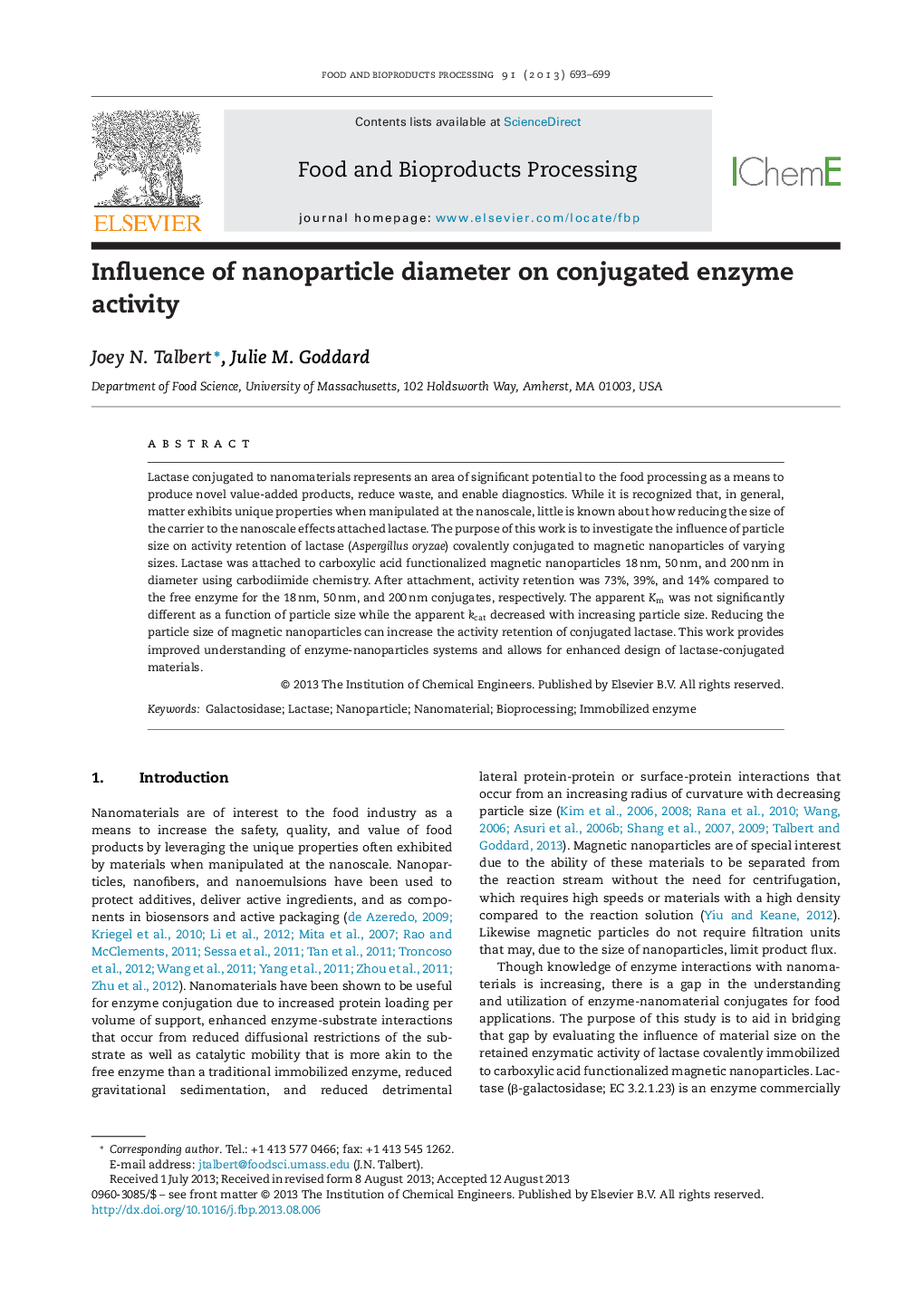| Article ID | Journal | Published Year | Pages | File Type |
|---|---|---|---|---|
| 19140 | Food and Bioproducts Processing | 2013 | 7 Pages |
•Lactase was covalently conjugated to magnetic particles of 18 nm, 50 nm, and 200 nm diameters.•Enzyme activity retention was inversely proportional to particle diameter.•kcat′ decreased with increasing particle size while Km′ was not significantly altered.•Loss of activity is attributed to enzyme-material surface interactions.
Lactase conjugated to nanomaterials represents an area of significant potential to the food processing as a means to produce novel value-added products, reduce waste, and enable diagnostics. While it is recognized that, in general, matter exhibits unique properties when manipulated at the nanoscale, little is known about how reducing the size of the carrier to the nanoscale effects attached lactase. The purpose of this work is to investigate the influence of particle size on activity retention of lactase (Aspergillus oryzae) covalently conjugated to magnetic nanoparticles of varying sizes. Lactase was attached to carboxylic acid functionalized magnetic nanoparticles 18 nm, 50 nm, and 200 nm in diameter using carbodiimide chemistry. After attachment, activity retention was 73%, 39%, and 14% compared to the free enzyme for the 18 nm, 50 nm, and 200 nm conjugates, respectively. The apparent Km was not significantly different as a function of particle size while the apparent kcat decreased with increasing particle size. Reducing the particle size of magnetic nanoparticles can increase the activity retention of conjugated lactase. This work provides improved understanding of enzyme-nanoparticles systems and allows for enhanced design of lactase-conjugated materials.
Graphical abstractFigure optionsDownload full-size imageDownload high-quality image (103 K)Download as PowerPoint slide
